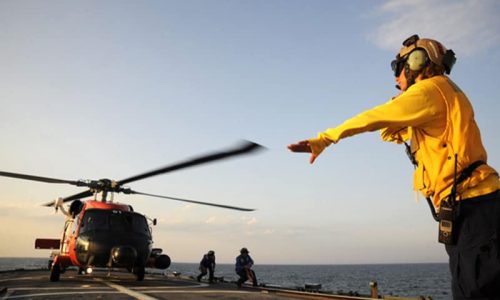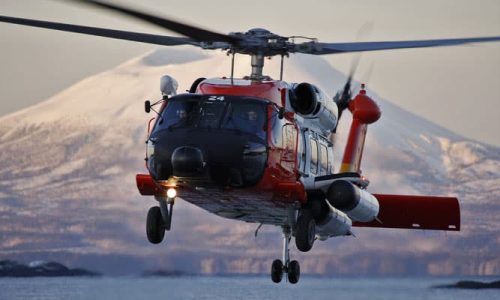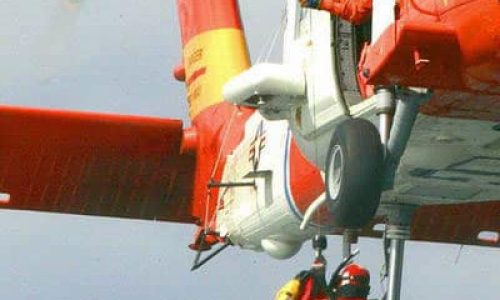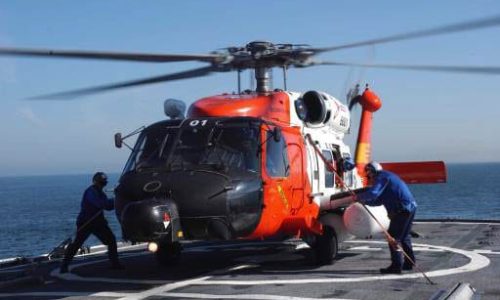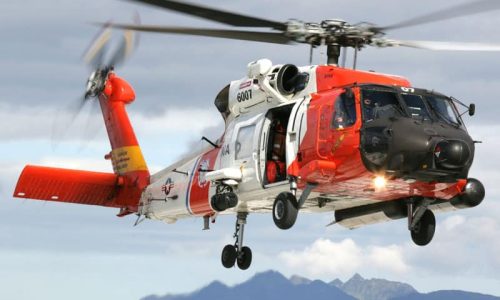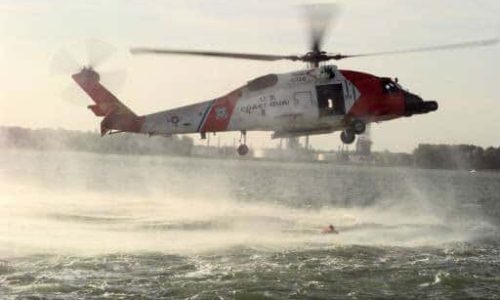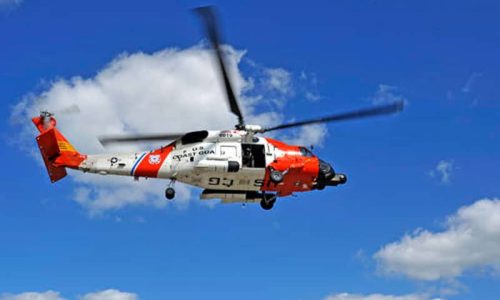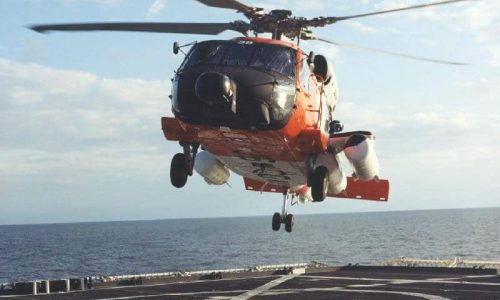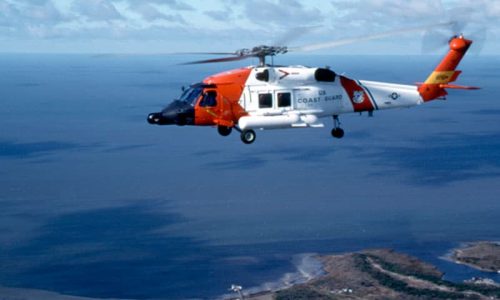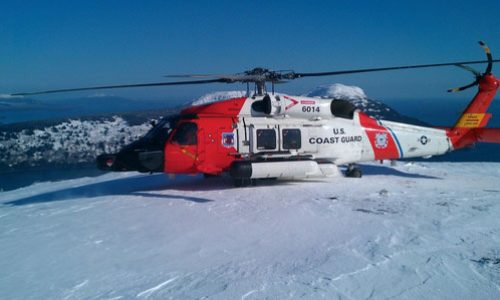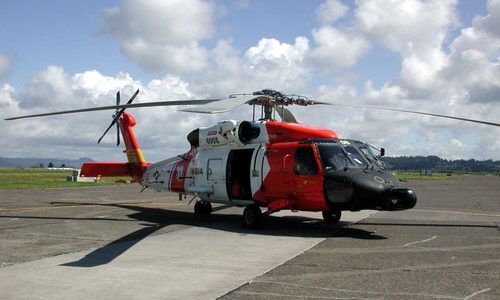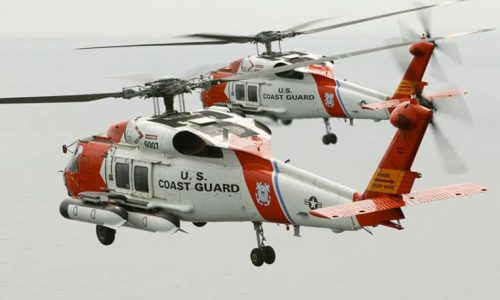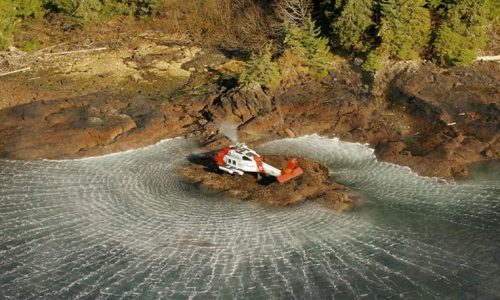The HH-60J Jayhawk is a medium-range recovery helicopter built by Sikorsky Aircraft Corporation. It is a multi-mission aircraft used to perform search and rescue, law enforcement, military readiness, and marine environmental protection missions.
The United States Coast Guard purchased 42 HH-60Js. They replaced the Sikorsky HH-3F Pelican helicopters that the Coast Guard had used for over 20 years. The HH-60J is similar to the HH-3F in many ways, and the assigned missions are the same. However, the HH-60J has numerous upgrades including a state of the art electronics package. The HH-60J is lighter, faster and the engines have more power. It does not, however, have the water landing capability that the HH-3F had.
The Jayhawk can fly 300 miles offshore, remain on scene 45 minutes, hoist six people on board, and return to its point of origin with a safe fuel reserve. Normal cruising speeds of 135-140 knots can be increased to a “dash” speed of 180 knots when necessary. It will fly comfortably at 140 knots for 6-7 hours, Though normally stationed ashore, the Jayhawk can be carried aboard 270-foot WMEC and 378-foot WHEC Coast Guard Cutters.
The USCG began converting its HH-60Js to MH-60Ts in January 2007. This avionics and capabilities upgrade was part of the USCG’s Integrated Deepwater System Program and provided a glass cockpit, an enhanced electro-optic/infrared sensor system as well as a radar sensor system and airborne use of force capability. The airborne use of force package includes both weapons for firing warning and disabling shots and armor to protect the aircrew from small arms fire. The MH-60T upgrades began in April 2009 and all 42 aircraft were upgraded by July 2013.

